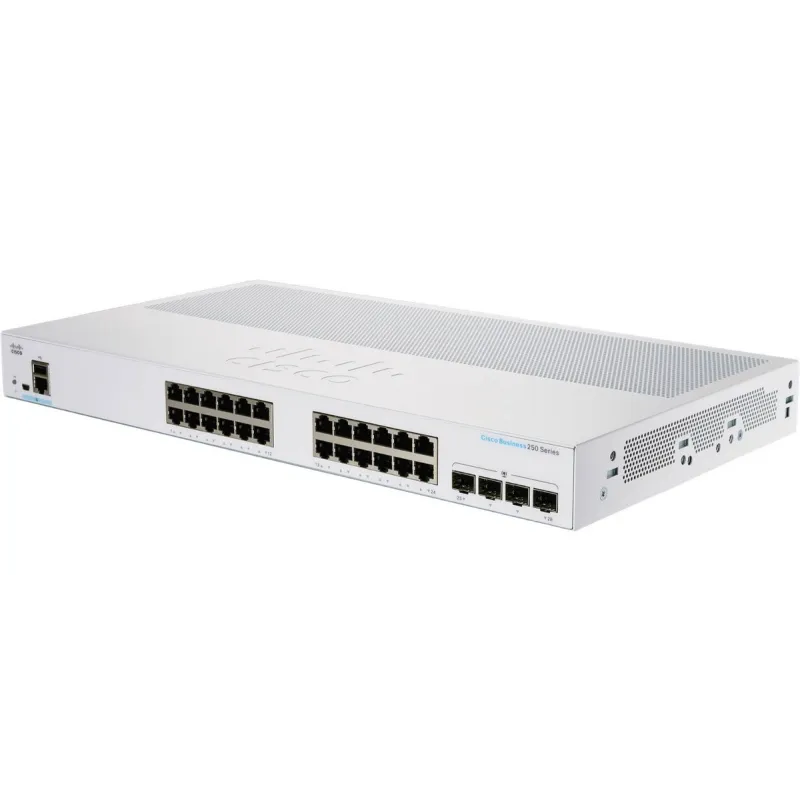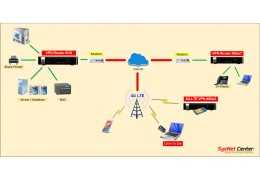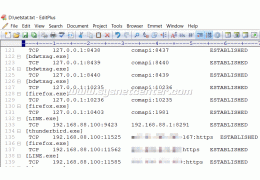คู่มือการใช้กล้อง TP-Link VIGI ดูผ่าน Cloud แบบไม่มี NVR บันทึกลง Memory Card การ Config


คู่มือการใช้กล้อง TP-Link VIGI ดูผ่าน Cloud แบบไม่มี NVR บันทึกลง Memory Card การ Config




CBS250-24T-4G
Cisco CBS250-24T-4G L2-Managed Gigabit Switch 24 Port Gigabit, 4 Port SFP รองรับ VLAN, Spanning Tree Protocol (STP), Access Control List (ACL), Quality Of Service (QoS), IPv4/IPv6 static routing
Support / ติดตั้งด้วยทีมงาน Certificate
สอบถามข้อมูลสินค้าเพิ่มเติม
LINE ID: @sysnet โทร: 02 102 4284
Click ต้องการใบเสนอราคา
Cisco Business 250 Series Datasheet
คู่มือการ Config VLAN บน Cisco CBS Switch Series
คู่มือการ Config VLAN Switch Cisco CBS Series - Access Point Cisco CBW Serie
คู่มือการทำ L3-Based VLAN บนอุปกรณ์ Cisco SG350 Series แบบ GUI
คู่มือการทำ L3 Based VLAN บนอุปกรณ์ Cisco SG350 Series
Product Specification | |
Overview | Cisco CBS250-24T-4G L2-Managed Gigabit Switch 24 Port Gigabit, 4 Port SFP รองรับ VLAN, Spanning Tree Protocol (STP), Access Control List (ACL), Quality Of Service (QoS), IPv4/IPv6 static routing |
Capacity in millions of packets per second (mpps) (64-byte packets) | 41.66 mpps |
Switching capacity in gigabits per second (Gbps) | 56 Gbps |
Layer 2 switching | |
Spanning Tree Protocol (STP) | Standard 802.1d spanning tree support |
Port grouping/link aggregation | Support for IEEE 802.3ad Link Aggregation Control Protocol (LACP) |
VLAN | Support for up to 255 active VLANs simultaneously |
Voice VLAN | Voice traffic is automatically assigned to a voice-specific VLAN and treated with appropriate levels of QoS. Auto voice capabilities deliver networkwide zero-touch deployment of voice endpoints and call control devices |
Generic VLAN Registration Protocol (GVRP) and Generic Attribute Registration Protocol (GARP) | Protocols for automatically propagating and configuring VLANs in a bridged domain |
IGMP (versions 1, 2, and 3) snooping | Internet Group Management Protocol (IGMP) limits bandwidth-intensive multicast traffic to only the requesters; supports 255 multicast groups (source-specific multicasting is also supported) |
IGMP querier | Used to support a Layer 2 multicast domain of snooping switches in the absence of a multicast router |
HOL blocking | Head-of-Line (HOL) blocking prevention |
Loopback detection | Provides protection against loops by transmitting loop protocol packets out of ports on which loop protection has been enabled. It operates independently of STP. |
Layer 3 routing | |
IPv4 routing | Wire-speed routing of IPv4 packets |
IPv6 routing | Wire-speed routing of IPv6 packets |
Layer 3 interface | Configuration of Layer 3 interface on physical port, LAG, VLAN interface, or loopback interface |
Classless Interdomain Routing (CIDR) | Support for CIDR |
Dynamic Host Configuration Protocol (DHCP) relay at Layer 3 | Relay of DHCP traffic across IP domains |
User Datagram Protocol (UDP) relay | Relay of broadcast information across Layer 3 domains for application discovery or relaying of Bootstrap Protocol (BootP)/DHCP packets |
Security | |
Secure Sockets Layer (SSL) | SSL encrypts all HTTPS traffic, allowing secure access to the browser-based management GUI in the switch |
Secure Shell (SSH) Protocol | SSH is a secure replacement for Telnet traffic. Secure Copy (SCP) also uses SSH. SSH v1 and v2 are supported. |
IEEE 802.1X (authenticator role) | Remote Authentication Dial-In User Service (RADIUS) authentication, guest VLAN, single/multiple host mode, and single/multiple sessions |
STP loopback guard | Provides additional protection against Layer 2 forwarding loops (STP loops) |
Secure Core Technology (SCT) | Ensures that the switch will receive and process management and protocol traffic no matter how much traffic is received |
Secure Sensitive Data (SSD) | A mechanism to manage sensitive data (such as passwords, keys, and so on) securely on the switch, populating this data to other devices, and secure autoconfig. Access to view the sensitive data as plain text or encrypted is provided according to the user-configured access level and the access method of the user |
Trustworthy systems | Trustworthy systems provide a highly secure foundation for Cisco products Run-time defenses (Executable Space Protection [X-Space], Address Space Layout Randomization [ASLR], Built-In Object Size Checking [BOSC]) |
Port security | Ability to lock source MAC addresses to ports and limit the number of learned MAC addresses |
RADIUS | Supports RADIUS authentication for management access. Switch functions as a client. |
Storm control | Broadcast, multicast, and unknown unicast |
DoS prevention | Denial-of-Service (DoS) attack prevention |
Multiple user privilege levels in CLI | Level 1, 7, and 15 privilege levels |
Access Control Lists (ACLs) | Support for up to 512 rules Drop or rate limit based on source and destination MAC, VLAN ID or IPv4 or IPv6 address, IPv6 flow label, protocol, port, Differentiated Services Code Point (DSCP)/IP precedence, TCP/UDP source and destination ports, 802.1p priority, Ethernet type, Internet Control Message Protocol (ICMP) packets, IGMP packets, TCP flag; ACL can be applied on both ingress and egress sides Time-based ACLs supported |
Quality of service (QoS) | |
Priority levels | 8 hardware queues |
Scheduling | Strict priority and Weighted Round-Robin (WRR) queue assignment based on DSCP and class of service (802.1p/CoS) |
Class of service | Port based; 802.1p VLAN priority based; IPv4/v6 IP precedence/Type of Service (ToS)/DSCP based; Differentiated Services (DiffServ); classification and re-marking ACLs, trusted QoS |
Rate limiting | Ingress policer; egress shaping and rate control; per VLAN, per port, and flow based |
Congestion avoidance | A TCP congestion avoidance algorithm is required to reduce and prevent global TCP loss synchronization |
IPv6 | |
IPv6 | IPv6 host mode |
IPv6 QoS | Prioritize IPv6 packets in hardware |
IPv6 ACL | Drop or rate limit IPv6 packets in hardware |
Multicast Listener Discovery (MLD v1/2) snooping | Deliver IPv6 multicast packets only to the required receivers |
IPv6 applications | Web/SSL, Telnet server/SSH, Ping, Traceroute, Simple Network Time Protocol (SNTP), Trivial File Transfer Protocol (TFTP), Simple Network Management Protocol (SNMP), Remote Authentication Dial-In User Service (RADIUS), Syslog, DNS client, DHCP client, DHCP autoconfig |
Management | |
Web user interface | Built-in switch configuration utility for easy browser-based device configuration (HTTP/HTTPS). Supports configuration, wizards, system dashboard, system maintenance, and monitoring Basic and advanced mode for maximum operational efficiency |
SNMP | SNMP versions 1, 2c, and 3 with support for traps, and SNMP v3 User-based Security Model (USM) |
Remote monitoring (RMON) | Embedded RMON software agent supports 4 RMON groups (history, statistics, alarms, and events) for enhanced traffic management, monitoring, and analysis |
IPv4 and IPv6 dual stack | Coexistence of both protocol stacks to ease migration |
Firmware upgrade | Web browser upgrade (HTTP/HTTPS) and TFTP and upgrade over SCP running over SSH |
Port mirroring | Traffic on a port can be mirrored to another port for analysis with a network analyzer or RMON probe. Up to 4 source ports can be mirrored to one destination port |
VLAN mirroring | Traffic from a VLAN can be mirrored to a port for analysis with a network analyzer or RMON probe. Up to 4 source VLANs can be mirrored to one destination port |
Dynamic Host Configuration Protocol (DHCP) (options 12, 66, 67, 129, and 150) | DHCP options facilitate tighter control from a central point (DHCP server), to obtain IP address, autoconfiguration (with configuration file download), DHCP Relay, and host name |
Secure Copy (SCP) | Securely transfers files to and from the switch |
Autoconfiguration with SCP file download | Enables mass deployment with protection of sensitive data |
Text-editable configs | Config files can be edited with a text editor and downloaded to another switch, facilitating easier mass deployment |
Smartports | Simplified configuration of QoS and security capabilities |
Auto Smartports | Automatically applies the intelligence delivered through the Smartports roles to the port based on the devices discovered over Cisco Discovery Protocol or LLDP-MED. This facilitates zero-touch deployments. |
Text view Command-Line Interface (CLI) | Scriptable CLI. A full CLI as well as a menu-based CLI is supported. User privilege levels 1, 7, and 15 are supported for the CLI. |
Cloud services | Support for Cisco Business Dashboard and Cisco Active Advisor |
Embedded Probe for Cisco Business Dashboard | Support for embedded probe for Cisco Business Dashboard running on the switch. Eliminates the need to set up a separate hardware or virtual machine for the Cisco Business Dashboard Probe on site. |
Cisco Network Plug and Play (PnP) agent | The Cisco Network Plug and Play solution provides a simple, secure, unified, and integrated offering to ease new branch or campus device rollouts or for provisioning updates to an existing network. The solution provides a unified approach to provision Cisco routers, switches, and wireless devices with a near-zero-touch deployment experience. Supports Cisco PnP Connect |
Localization | Localization of GUI and documentation into multiple languages |
Login banner | Configurable multiple banners for web as well as CLI |
Other management | Traceroute; single IP management; HTTP/HTTPS; RADIUS; port mirroring; TFTP upgrade; DHCP client; Simple Network Time Protocol (SNTP); cable diagnostics; Ping; syslog; Telnet client (SSH secure support); automatic time settings from Management Station |
Discovery | |
Bonjour | The switch advertises itself using the Bonjour protocol |
Link Layer Discovery Protocol (LLDP) (802.1ab) with LLDP-MED extensions | Link Layer Discovery Protocol (LLDP) allows the switch to advertise its identification, configuration, and capabilities to neighboring devices that store the data in a MIB. LLDP-MED is an enhancement to LLDP that adds the extensions needed for IP phones |
Cisco Discovery Protocol | The switch advertises itself using the Cisco Discovery Protocol. It also learns the connected device and its characteristics using Cisco Discovery Protocol |
Power over Ethernet (PoE) | |
802.3at PoE+ and 802.3af PoE delivered over any of the RJ-45 ports within the listed power budgets | The following switches support 802.3at PoE+, 802.3af, and Cisco prestandard (legacy) PoE. Maximum power of 30.0W to any 10/100 or Gigabit Ethernet port, until the PoE budget for the switch is reached. The total power available for PoE per switch is as follows: |
Power dedicated to PoE | - |
Number of ports that support PoE | - |
Port | |
RJ-45 ports | 24 |
Combo ports (RJ-45 + SFP) | 4 |
Console port | Cisco Standard mini USB Type-B / RJ45 console port |
USB slot | USB Type-A slot on the front panel of the switch for easy file and image management |
Buttons | Reset button |
Cabling type | Unshielded Twisted Pair (UTP) Category 5e or better for 1000BASE-T |
LEDs | System, Link/Act, PoE, Speed |
Flash | 256 MB |
CPU | 800 MHz ARM |
DRAM | 512 MB |
Packet buffer | 1.5MB |
Unit dimensions (W x H x D) | 445 x 240 x 44 mm (17.5 x 9.45 x 1.73 in) |
Unit weight | 2.63 kg (5.80 lb) |
Power | 100 to 240V 50 to 60 Hz, internal, universal: CBS250-16T-2G, CBS250-16P-2G, CBS250-24T-4G, CBS250-24PP-4G, CBS250-24P-4G, CBS250-24FP-4G, CBS250-48T-4G, CBS250-48PP-4G, CBS250-48P-4G, CBS250-24T-4X, CBS250-24P-4X, CBS250-24FP-4X, CBS250-48T-4X, CBS250-48P-4X100 to 240V 50 to 60 Hz, external: CBS250-8T-E-2G, CBS250-8PP-E-2G, CBS250-8P-E-2G, CBS250-8FP-E-2G |
Certification | UL (UL 60950), CSA (CSA 22.2), CE mark, FCC Part 15 (CFR 47) Class A |
Operating temperature | 23° to 122°F (-5° to 50°C) |
Storage temperature | -13° to 158°F (-25° to 70°C) |
Operating humidity | 10% to 90%, relative, noncondensing |
Package contents | Cisco Business 250 Series Smart Switch |
รับประกัน | Life Time |
ยังไม่มีการ review กรุณาเขียน review
ไม่มีคำถามที่ใช้ได้ ถามคำถามของคุณ

CBS250-24T-4G
Cisco CBS250-24T-4G L2-Managed Gigabit Switch 24 Port Gigabit, 4 Port SFP รองรับ VLAN, Spanning Tree Protocol (STP), Access Control List (ACL), Quality Of Service (QoS), IPv4/IPv6 static routing
check_circle
check_circle